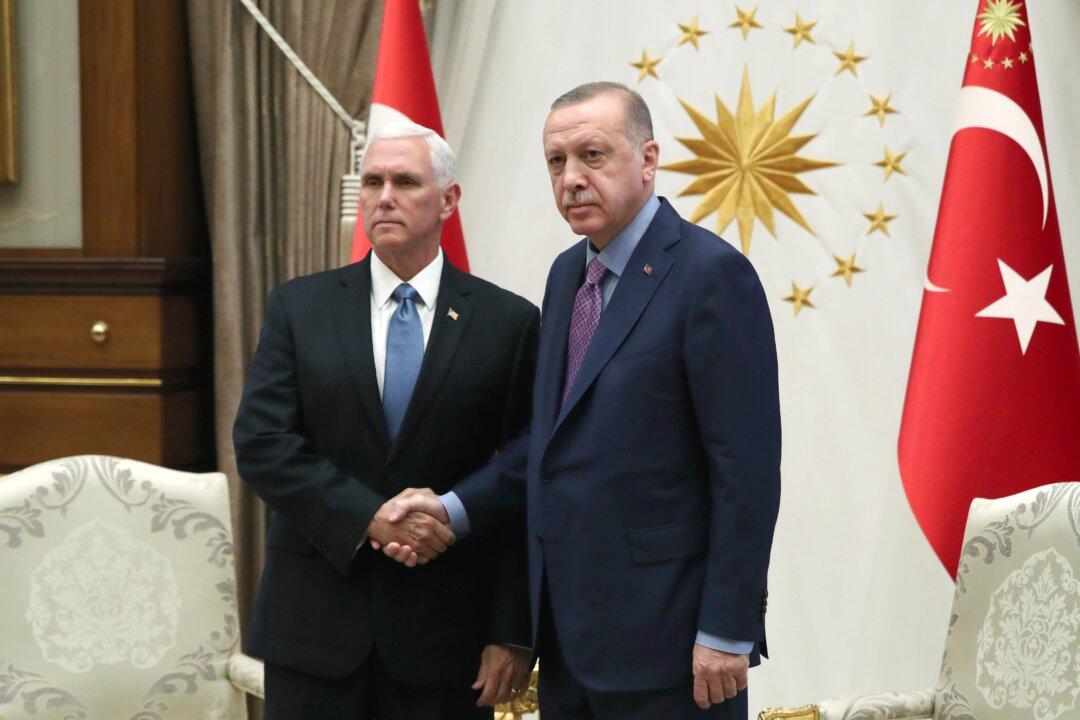A U.S. delegation led by Vice President Mike Pence and Secretary of State Mike Pompeo negotiated with Turkish President Recep Tayyip Erdogan to agree to a five-day ceasefire in Syria, Pence said on Oct. 17.
Turkey’s week-long military incursion in northern Syria, which it called “Operation Peace Spring,” was met with tough resistance from a new alliance between local Kurdish forces and their previous enemy, the Russian-backed Syrian government.





